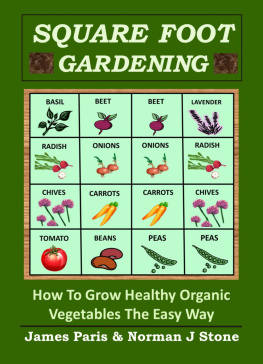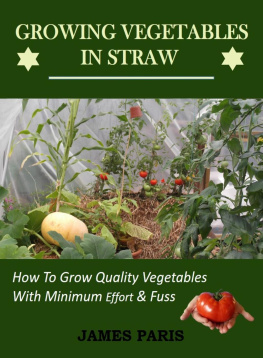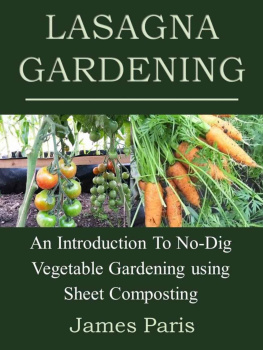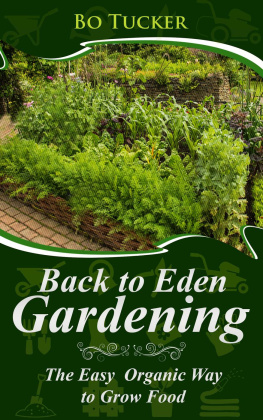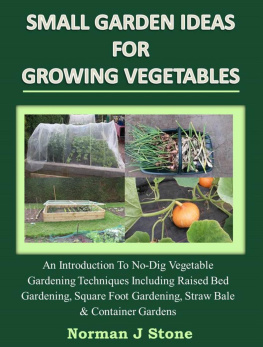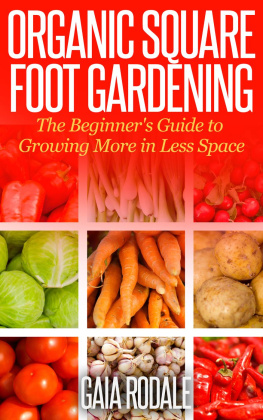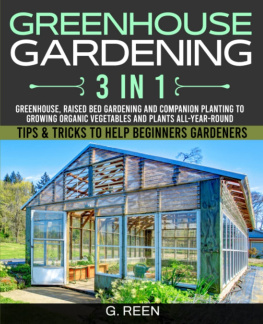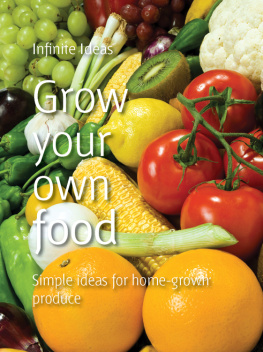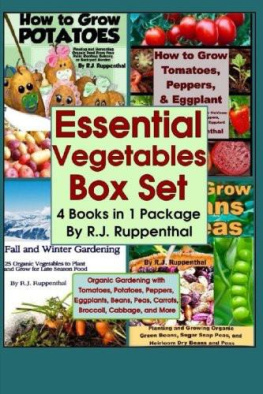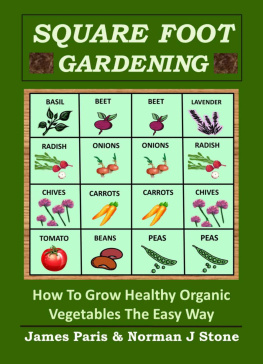James Paris - Square Foot Gardening: How to Grow Healthy Organic Vegetables the Easy Way
Here you can read online James Paris - Square Foot Gardening: How to Grow Healthy Organic Vegetables the Easy Way full text of the book (entire story) in english for free. Download pdf and epub, get meaning, cover and reviews about this ebook. year: 2015, publisher: Deanburn Publications, genre: Children. Description of the work, (preface) as well as reviews are available. Best literature library LitArk.com created for fans of good reading and offers a wide selection of genres:
Romance novel
Science fiction
Adventure
Detective
Science
History
Home and family
Prose
Art
Politics
Computer
Non-fiction
Religion
Business
Children
Humor
Choose a favorite category and find really read worthwhile books. Enjoy immersion in the world of imagination, feel the emotions of the characters or learn something new for yourself, make an fascinating discovery.
- Book:Square Foot Gardening: How to Grow Healthy Organic Vegetables the Easy Way
- Author:
- Publisher:Deanburn Publications
- Genre:
- Year:2015
- Rating:5 / 5
- Favourites:Add to favourites
- Your mark:
Square Foot Gardening: How to Grow Healthy Organic Vegetables the Easy Way: summary, description and annotation
We offer to read an annotation, description, summary or preface (depends on what the author of the book "Square Foot Gardening: How to Grow Healthy Organic Vegetables the Easy Way" wrote himself). If you haven't found the necessary information about the book — write in the comments, we will try to find it.
How To Grow Healthy Organic vegetables In Only 16 Square Feet
If you would like to grow your own healthy vegetables but have limited space to do so, then this is the book for you! Best-Selling authors James Paris and Norman J Stone combine their knowledge of self-sufficiency and growing organic vegetables to present this book on square foot gardening.
This method of growing vegetables in small spaces, combines Raised Bed Gardening with the concept of providing a good range of organically grown vegetables within the smallest of areas. Through the combined use of the ideal growing compost for best nutrition, and Companion Planting methods for nutrition and pest/disease control; SFG is the gardening method of choice for millions of switched on gardeners today.
Along with Raised Bed and container planting methods, SFG is another way that individuals can take back control of their food needs from the big corporations and benefit from fresh organically produced vegetables - by growing their own easily and with minimum fuss!
What You Will Find In This Book:
1. An introduction to SFG What it is all about.
Growing vegetables in a square foot garden is all the rage just now but what exactly is it all about? Here you will find out about the background to SFG and why it is so effective for growing fruit and vegetables of many kinds.
2. How to construct your own Square Foot Garden
Simple instructions for constructing a simple SFG frame it does not get much easier than this!
3. How to make your own special mix of compost for infilling.;
The secret sauce behind the success of this intensive gardening technique, lays in the growing compound. Find out how to make top-notch organic compost to improve your soil and subsequent crop-yield.
5. Guidelines for planting out your SFG.
Simple and clear diagrams and pictures to get you started on your own SFG.
6. Introducing Companion Planting Good and Bad companions for your veggies.
Companion Planting plays a crucial role in the success of a square foot or raised bed garden. Some great tips here to get your vegetables growing strong and proud.
7. Beneficial herbs and Organic pest control.
Herb gardening is extremely important in the control of destructive pests. Find out which herbs are more beneficial for your plants.
8. Instructions on plant support and growing methods.
Some instruction on how to go about supporting your plants so that you may get the best out of them and minimalize damage due to heavy crops.
9. A list of popular vegetables and herbs to grow in your SFG, including planting, plant care and harvesting/storing your vegetables.
A comprehensive list of good vegetables and herbs that will complement each other throughout the growing process, as well as how to harvest and store your crops for later use.
James Paris: author's other books
Who wrote Square Foot Gardening: How to Grow Healthy Organic Vegetables the Easy Way? Find out the surname, the name of the author of the book and a list of all author's works by series.

